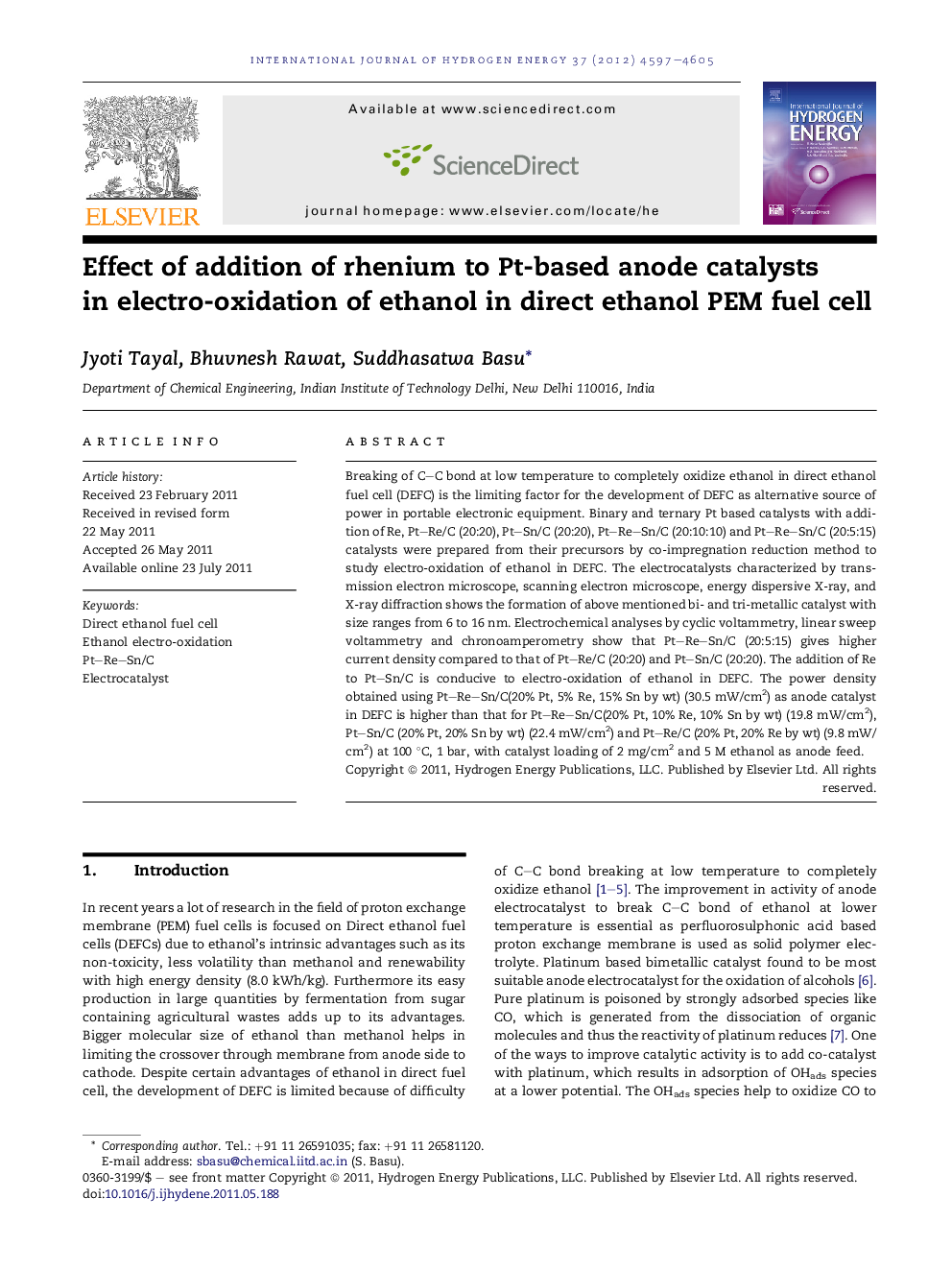| Article ID | Journal | Published Year | Pages | File Type |
|---|---|---|---|---|
| 1275521 | International Journal of Hydrogen Energy | 2012 | 9 Pages |
Breaking of C–C bond at low temperature to completely oxidize ethanol in direct ethanol fuel cell (DEFC) is the limiting factor for the development of DEFC as alternative source of power in portable electronic equipment. Binary and ternary Pt based catalysts with addition of Re, Pt–Re/C (20:20), Pt–Sn/C (20:20), Pt–Re–Sn/C (20:10:10) and Pt–Re–Sn/C (20:5:15) catalysts were prepared from their precursors by co-impregnation reduction method to study electro-oxidation of ethanol in DEFC. The electrocatalysts characterized by transmission electron microscope, scanning electron microscope, energy dispersive X-ray, and X-ray diffraction shows the formation of above mentioned bi- and tri-metallic catalyst with size ranges from 6 to 16 nm. Electrochemical analyses by cyclic voltammetry, linear sweep voltammetry and chronoamperometry show that Pt–Re–Sn/C (20:5:15) gives higher current density compared to that of Pt–Re/C (20:20) and Pt–Sn/C (20:20). The addition of Re to Pt–Sn/C is conducive to electro-oxidation of ethanol in DEFC. The power density obtained using Pt–Re–Sn/C(20% Pt, 5% Re, 15% Sn by wt) (30.5 mW/cm2) as anode catalyst in DEFC is higher than that for Pt–Re–Sn/C(20% Pt, 10% Re, 10% Sn by wt) (19.8 mW/cm2), Pt–Sn/C (20% Pt, 20% Sn by wt) (22.4 mW/cm2) and Pt–Re/C (20% Pt, 20% Re by wt) (9.8 mW/cm2) at 100 °C, 1 bar, with catalyst loading of 2 mg/cm2 and 5 M ethanol as anode feed.
► Pt–Re–Sn/C catalyst was prepared by co-impregnation reduction method for electro-oxidation of ethanol. ► Addition of Re to Pt–Sn/C is found to be conducive to electro-oxidation of ethanol in DEFC. ► Maximum power density obtained using Pt–Re–Sn/C (20:5:15) as anode catalyst in DEFC is 30.5 mW/cm2.
